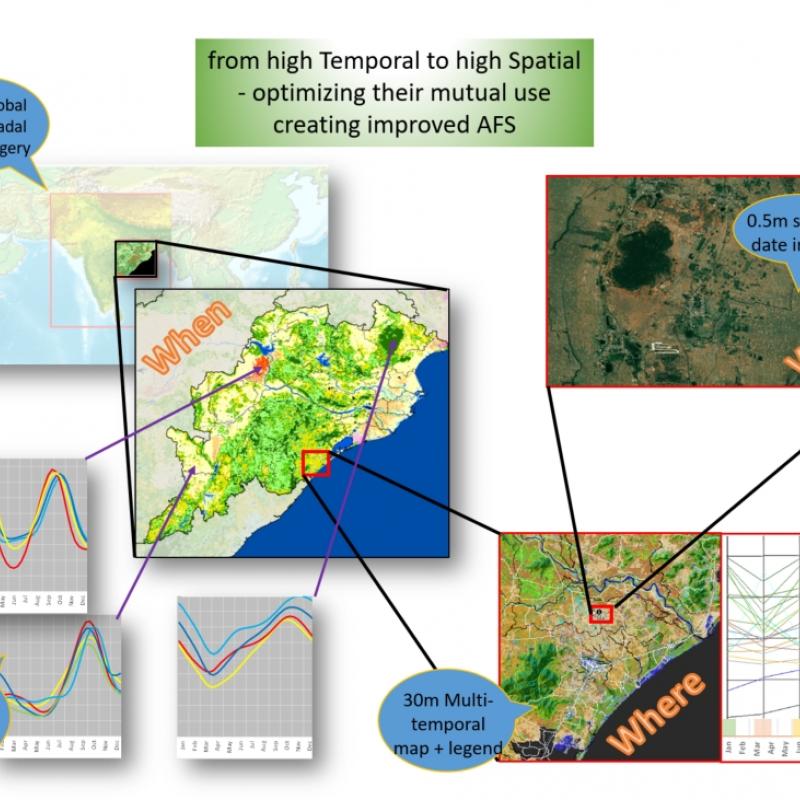Area Frame Sampling (AFS) for improved Agricultural Statistics Collection

A suitable candidate is the one who is keenly interested in Food Security and who has an agricultural background and keen RS/GIS-based future career plans.
For Orisha, India, the Forages-group is building a comprehensive geo-database of imagery and agricultural (land-use) statistics. Very detailed maps (SHP-files) as prepared by our Indian counterparts are available These maps show how our counterparts used admin-areas as sample frames. We also have detailed recent (official) land-use statistics (estimates of cropped areas and yields) on-file. Preparing and comparing crop-area estimates using landscape-based frames versus the presently adopted administration-areas one, requires exploration, study, and detailed statistical comparative assessments.
The statistical method to use area frames to gather household and field statistics is well developed, and the supporting formulae and logic is well described. Unfortunately, in general, the user-community chose to adopt administrative units as strata to sample for AFS. This was never the purpose of any AFS-scheme aiming at producing spatial statistics. A frame is supposed to be representative, relatively uniform within, and generally different from neighbouring frames.
Integration of AFS with the spatial-temporal clustering of Hyper-temporal imagery is under- exploited. This in spite of an all-out success in using such clusters for preparing agricultural benchmark maps, improving land cover maps, and doing bio-diversity studies. Their strength being that the obtained signal in the temporal domain is highly useful to differentiate agro-ecosystems, their density (occurrence), their species richness, their phenology characteristics, differences in crop calendars, and differences in mosaic-compositions.
Obviously, such frames pose a great opportunity to replace the frames in use by AFS practitioners with the best ecologically sound frames we can construct at present. We now actually need to prove that our ‘new’ frame performs x% better and generates a y% improvement in accuracy of generated agricultural statistics.
